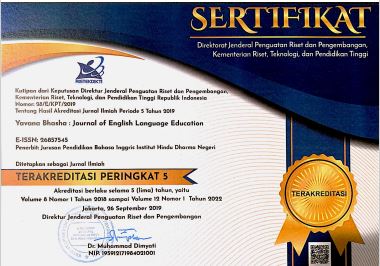CULTURALLY DISTINCTIVE FEATURES IN JOURNALISTIC TEXT: A CASE STUDY ON STUDENTS’ VS. AI-GENERATED TRANSLATIONS
DOI:
https://doi.org/10.25078/yb.v7i1.3212Keywords:
artificial intelligence, culturally distinctive features, journalistic, translation strategiesAbstract
The prevalence of Artificial Intelligence (AI) in this modern era has been one of the major interests in translation studies. The ability of AI to produce human-like translations has become an ongoing discussion among scholars. Therefore, this study aimed to investigate the utility of AI in providing alternatives for journalistic text translation results made by English Department students of Universitas Palangka Raya during a Translation Course. Given the communicative nature of journalistic texts, this study explores how culturally distinctive features, such as idioms, collocations, traditional language nuances, and organization names, are translated from Indonesian into English. By referring to translation strategies adapted from Newmark (1988), Hoed (2006), and Baker (2011), translation results made by students are compared with those generated by AI technology, i.e. DeepL and ChatGPT. Since creativity is one of the key characteristics of human translation, this study examines whether AI systems can be reliable tools for demonstrating the same creativity level. Translation creativity in this study refers to the ability to select the most effective strategies and wording to produce better translation versions of those culturally distinctive features. This study is expected to shed light on the evolving role of AI in the field of translation.








